Background:
In Japan, the number of drug options for onychomycosis with insurance coverage has increased, and the guideline for the treatment of dermatomycosis was revised in 2019. These may lead to changes in the treatment patterns of onychomycosis in clinical practice.
Objectives:
To investigate the latest drug treatment patterns.
Methods:
A web-based questionnaire survey was performed among dermatologists in Japan who prescribed drug to more than 10 patients with onychomycosis within the past one month.
Results:
Regarding the survey participants, 336 dermatologists, the mean number of patients treated with drugs for onychomycosis within the past one month was 42.1 patients/dermatologist. Distal and lateral subungual onychomycosis (DLSO) was the most common subtype (56.2%), followed by total dystrophic onychomycosis (TDO) (17.2%), spike-shaped (11.1%), superficial white onychomycosis (SWO) (9.0%), and proximal subungual onychomycosis (PSO) (5.8%). Topical agents with insurance coverage (topical agents) (60.0%), oral agents (35.7%), and other (4.3%) agents were prescribed. Regarding first-line treatment by disease type, 69.3% of the dermatologists used topical agents for mild DLSO, 56.8% for spike-shaped, and 69.0% for SWO, whereas 80.1% prescribed oral agents for severe DLSO, 62.8% for PSO, and 73.5% for TDO. For moderate DLSO, 54.5% and 44.3% used oral and topical agents, respectively. Regarding first-line treatment by patient background, 61.9% of the dermatologists prescribed topical agents for patients aged≥75 years, 73.2% for patients taking multiple oral agents for other diseases, and 89.6% for patients with hepatic dysfunction, whereas 58.3% prescribed oral agents for patients with tinea pedis complications and 69.3% for patients with ≥3 affected nails.
Conclusions:
In Japan, there are many drug options for onychomycosis with insurance coverage, including three oral and two topical agents. Regarding drug treatment for onychomycosis in clinical practice, agents appeared to be selected by Japanese dermatologists, considering disease type, patient age, and underlying disease.
View full abstract
